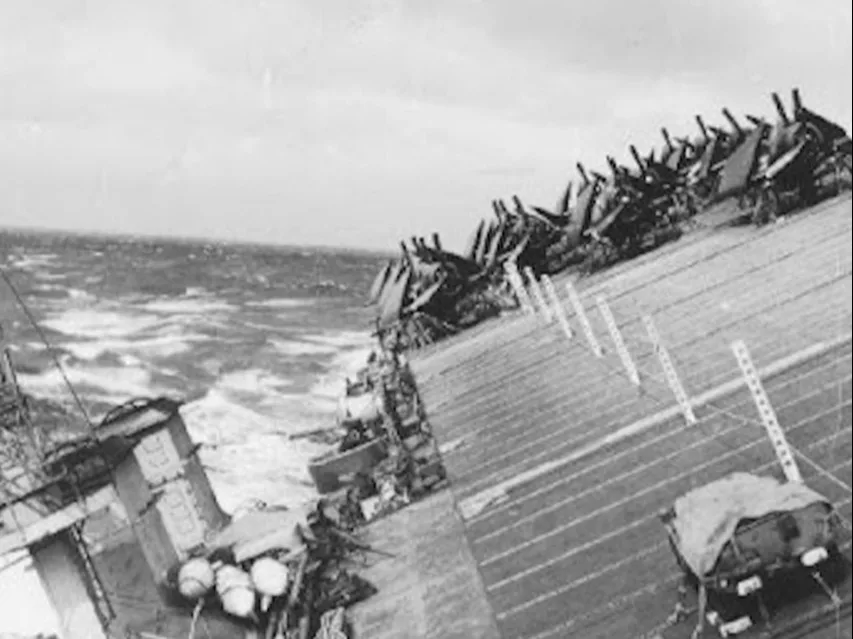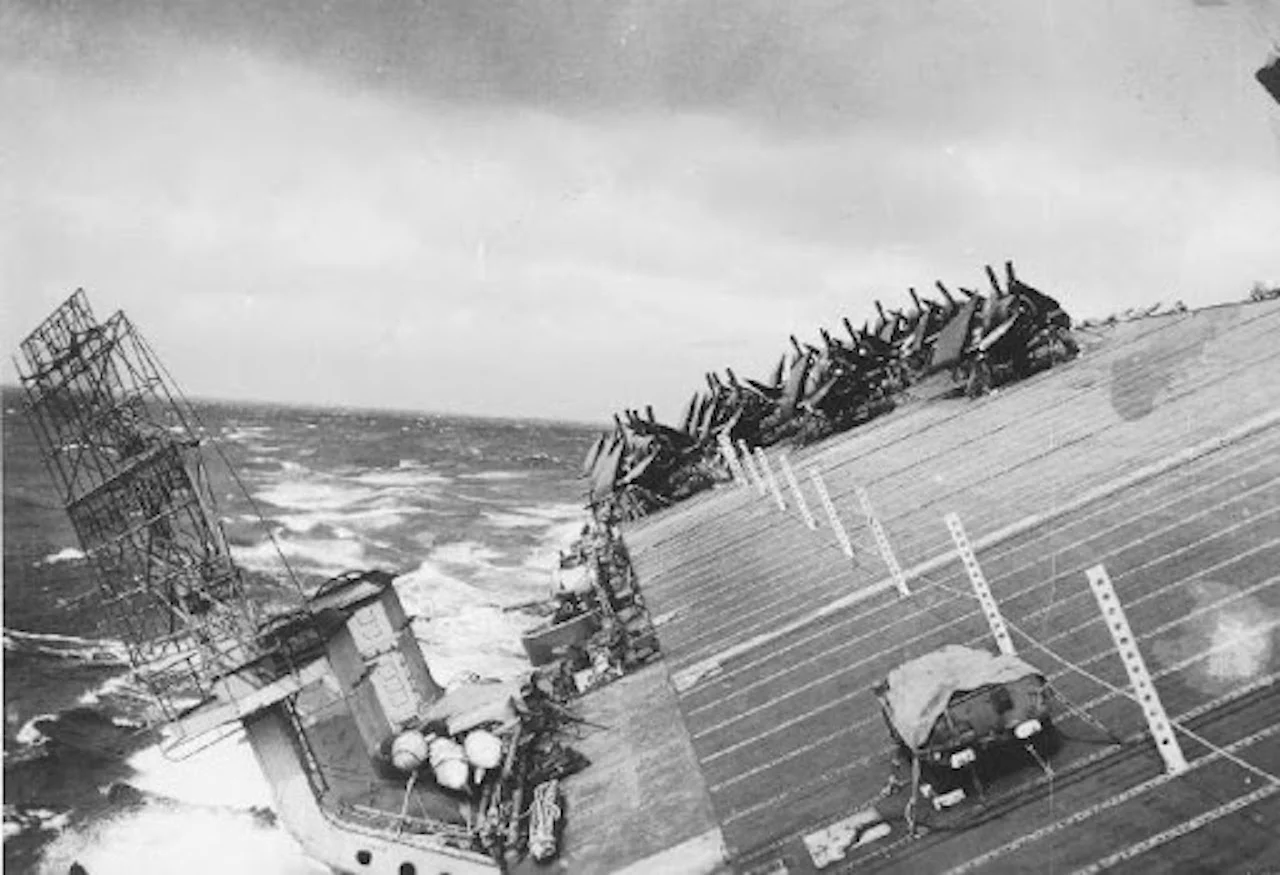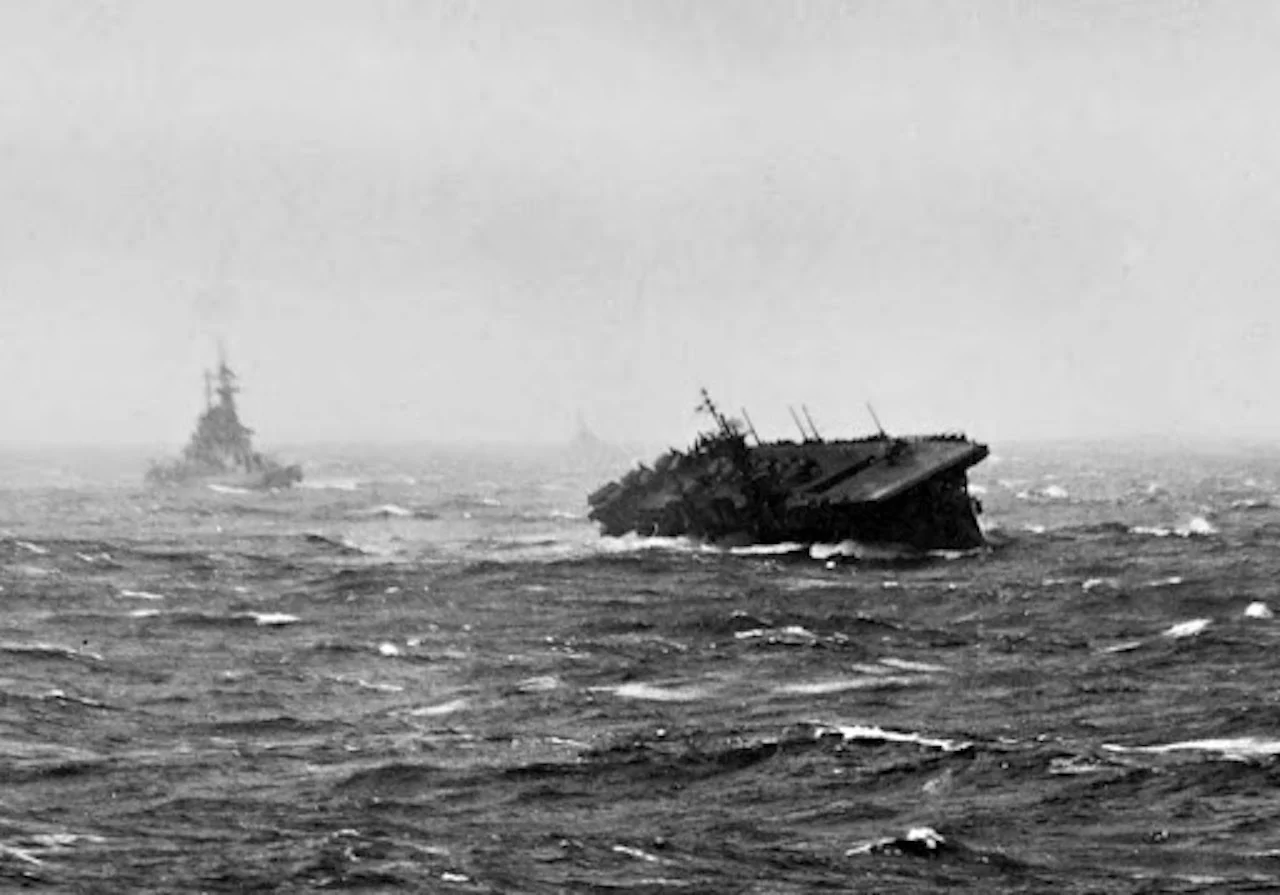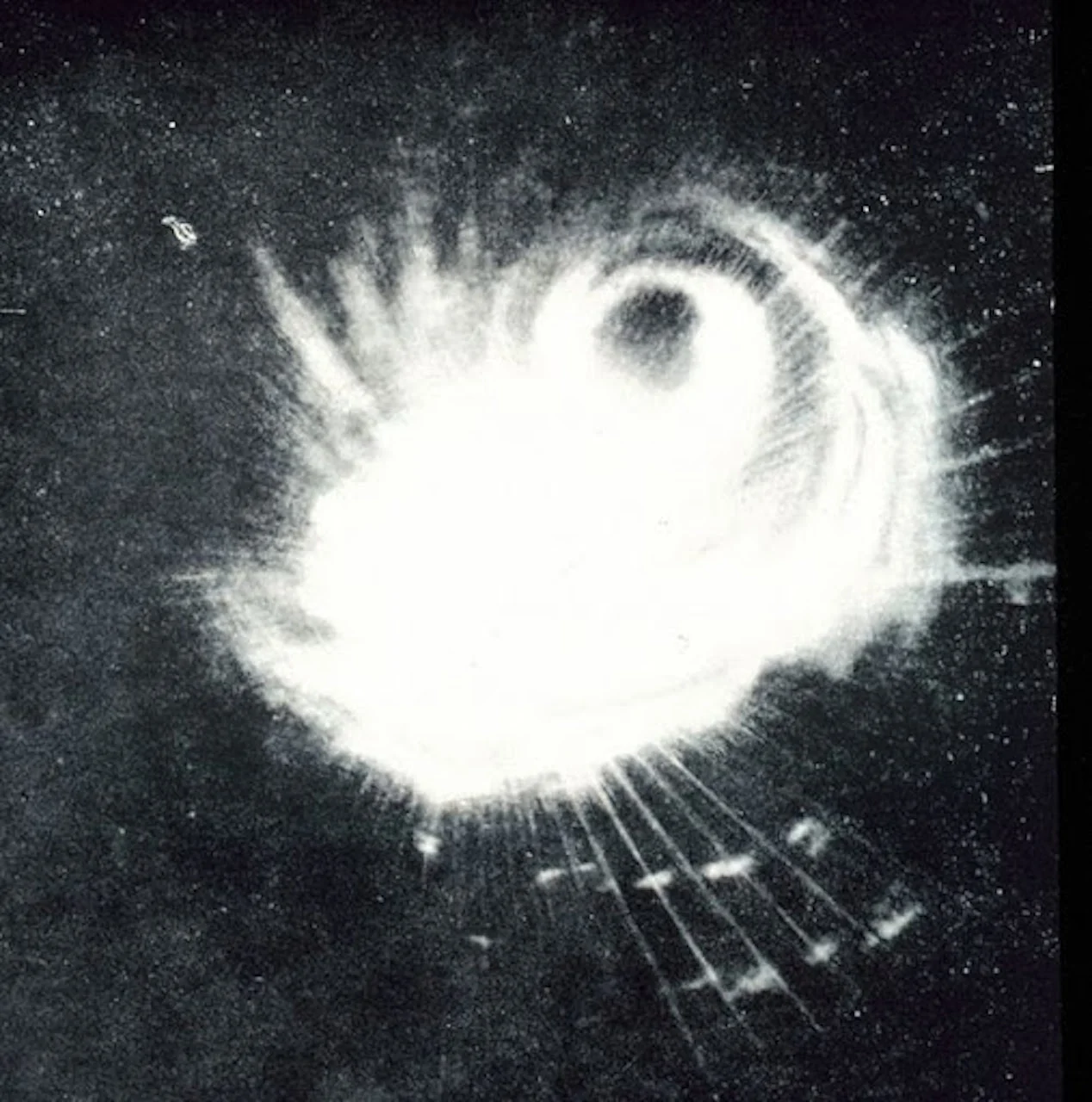
Remembering the WWII typhoon that was known as the 'Killer Cobra'
On Dec. 18, 1944, the small but violent Typhoon Cobra hit the task force while many of the ships were attempting to refuel. Three destroyers capsized as a cruiser, five aircraft carriers and three long-endurance warships suffered serious damage.
This Day In Weather History is a daily podcast by Chris Mei from The Weather Network, featuring stories about people, communities and events and how weather impacted them.
--
Typhoon Cobra, also known as the Typhoon of 1944 or Halsey's Typhoon (named after Admiral William "Bull" Halsey), was the U.S. navy's designation for a tropical cyclone that struck the Task Force 38 during the Second World War in the Pacific.
The typhoon was first observed on Dec. 17 as it surprised a fleet of ships in the open waters of the western Pacific Ocean. Sustained winds associated with the storm were up to 100 m.p.h. (160.93 km/h) with gusts to 140 m.p.h.(225.3 km/h).

A view of USS Cowpens' (CVL-25) starboard, side flight deck. The photo was taken at the time Typhoon Cobra hit the Third Fleet on Dec. 18, 1944. (U.S. navy)
Then, on Dec. 18, the small but violent Typhoon Cobra hit the task force while many of the ships were attempting to refuel. Three destroyers capsized while a cruiser, five aircraft carriers and three long-endurance warships suffered serious damage.
Approximately 790 officers and men were lost or killed, with another 80 injured. This storm inflicted more damage on the U.S. navy than any storm since the hurricane at Apia, Samoa, in 1889.

The U.S. Navy light aircraft carrier USS Langley (CVL-27) rolling heavily during Typhoon Cobra, Dec. 18, 1944. A battleship is steaming behind the carrier. The image is part of an album of photographs collected by Capt. Carlos W. Wieber during his command of the aircraft carrier USS Essex (CV-9) during 1944-45. (U.S. navy)
In the aftermath of this deadly storm, the Pacific fleet established new weather stations in the Caroline Islands, and as they were secured, Manila, Iwo Jima, and Okinawa. Also, new weather central offices were established at Guam and Leyte.

A Navy ship's radar captured the structure of a typhoon on December 18. This storm was the second tropical storm ever to be observed on radar East of the Philippine Islands. (NOAA/U.S. navy)
On today's podcast, Chris Mei talks about how powerful Typhoon Cobra was and its devastating impacts on U.S. navy during the Second World War.
Subscribe to 'This Day in Weather History': Apple Podcasts | Amazon Alexa | Google Assistant | Spotify | Google Podcasts | iHeartRadio | Overcast'
Thumbnail courtesy: U.S. navy










